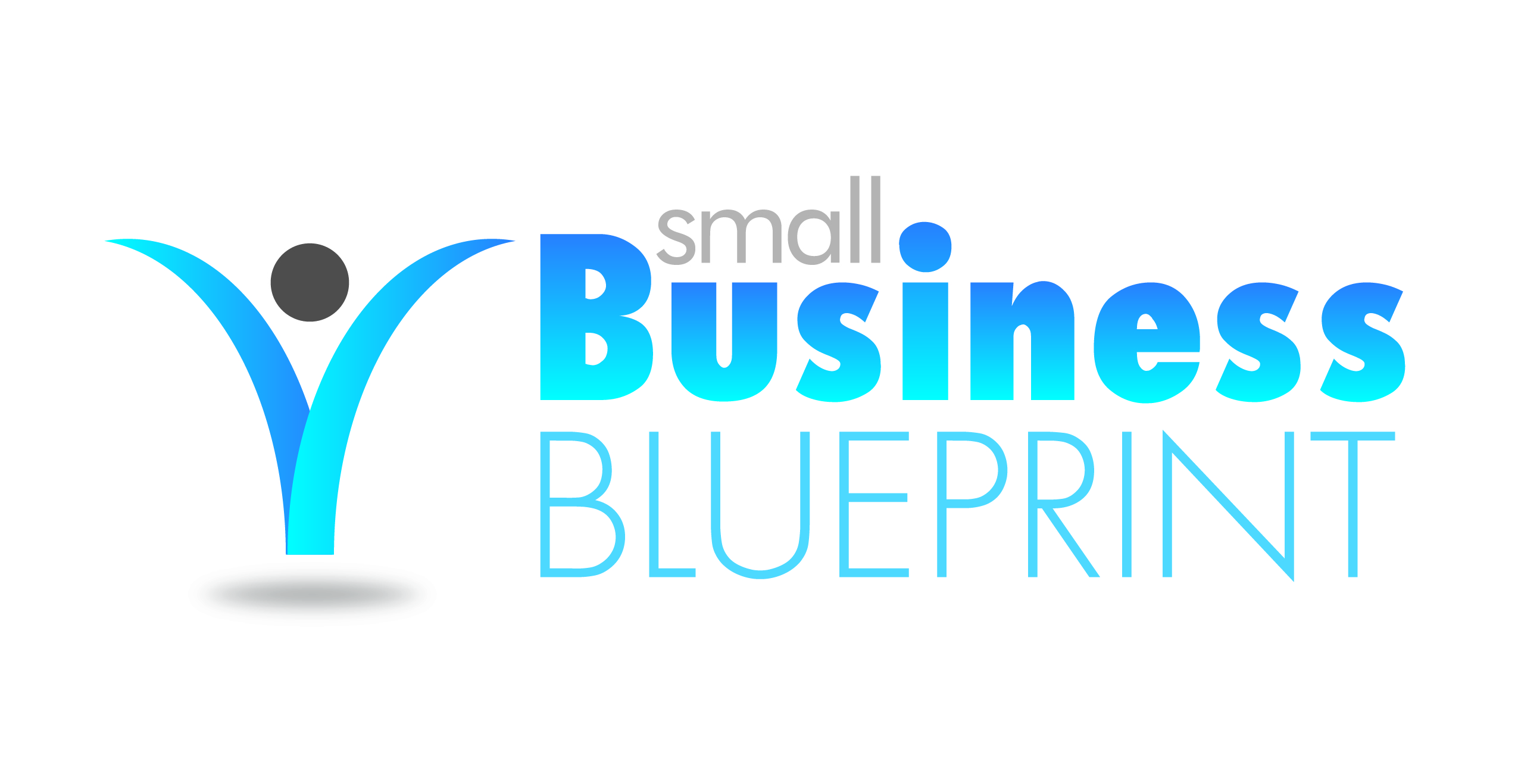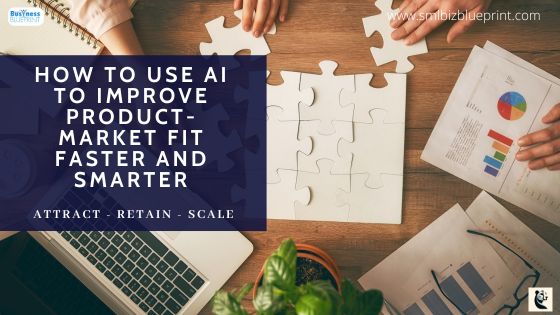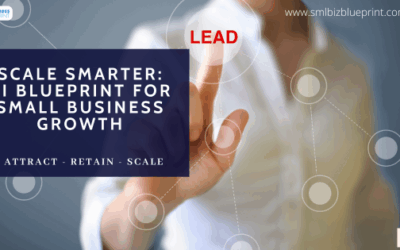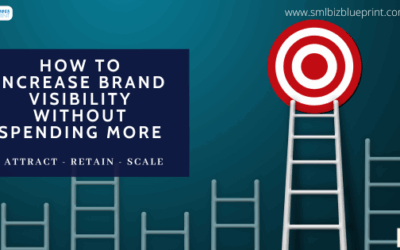You’ve built a great product—at least, that’s what your gut says. But customers aren’t biting. Sales are sluggish, feedback is scattered, and you’re left asking the same frustrating question:
“What are we missing?”
This is the silent killer of most businesses—not finding product/market fit. It’s the difference between scaling with ease and burning cash while guessing what the market actually wants.
The old way of solving this meant surveys, interviews, spreadsheets, and a mountain of trial and error. But that’s no longer enough—not in a world where competitors use AI to move faster, analyse deeper, and pivot smarter.
This guide will teach you how to use AI to improve your product/market fit. You’ll discover:
How AI uncovers unmet customer needs you’re overlooking.
How tools like predictive analytics and sentiment analysis reveal what truly drives buying decisions.
How AI enables smarter customer segmentation, faster feedback loops, and real-time product iterations
And how even small teams can use AI without large datasets or technical complexity
No more guessing. No more wasted launches. This is your playbook for building what people actually want—using AI to make your product indispensable.

#1 Why Product/Market Fit is the Make-or-Break Metric for Modern Businesses
Imagine running full speed in the wrong direction. Without product/market fit, marketing, sales, and development become like that.
You can invest heavily in lead gen, social media, and funnels, but nothing will work if your product doesn’t meet a real need.
Product/market fit is when your target customers not only understand your product but want it, use it, recommend it, and pay for it. It’s not about a hunch—it’s about measurable traction.
The sooner you find it, the sooner everything starts working: higher conversions, organic growth, reduced churn, and scalable revenue.
Yet, this is where most businesses get it wrong. They focus on features, not relevance. They push promotions, not alignment. And they wonder why growth stalls.
🚨 The Data Doesn’t Lie
According to CB Insights, 35% of startups fail because there’s no market need.
Only 1 in 10 early-stage founders say they’re confident about their product/market fit.
Businesses that achieve fit are 2.5x more likely to scale successfully in their first two years (Y Combinator).
These aren’t just statistics—they’re warning signs.
🧠 Where AI Fits In
Finding product/market fit used to be a mix of instinct, endless user interviews, and drawn-out iterations.
AI changes the game. It gives you the ability to:
- Analyse thousands of customer inputs (reviews, chats, feedback) in minutes.
- Spot patterns and unmet needs in your market through predictive modeling
- Evaluate how well your product solves actual pain points—not just assumed ones
AI transforms guesswork into insight. It puts structure around ambiguity and speed around strategy.
In short, it helps you find fit faster, with far fewer missteps.
Stay ahead of the curve!
Subscribe to our newsletter and never miss the latest in business growth and marketing strategies.
#2 How AI Transforms the Search for Product/Market Fit
Most businesses look for product/market fit using outdated methods: slow surveys, anecdotal feedback, and basic web analytics. The problem? These tactics capture fragments of reality—not the full picture.
That’s where AI becomes a force multiplier.
By ingesting and analysing vast volumes of structured and unstructured data, AI reveals what customers want—before they tell you directly.
It connects dots across behavior, feedback, and trends to uncover patterns that are nearly impossible to detect manually.
🔍 AI Identifies the Gaps You Can’t See
AI isn’t just about automating processes. It’s about finding what’s missing—the feature your audience wants but you haven’t built, the frustration they haven’t voiced but keep experiencing, or the audience segment that’s quietly churning.
Here’s how it works:
Predictive analytics surface which customer cohorts are likely to convert or churn based on behavior and intent.
Natural language processing (NLP) tools extract themes, topics, and sentiment from reviews, emails, chat logs, and social media.
Clustering algorithms help segment audiences not just by demographics, but by shared attitudes, needs, and buying behaviors.
This is no longer reserved for big-budget tech teams. Tools like Glimpse, Crayon, and Crux allow small businesses to tap into AI-driven market intelligence affordably.
🧠 Example: From Reactive to Proactive
Take Spotify. It doesn’t just track what songs you like—it uses AI to anticipate what you’ll enjoy next, even before you’ve heard it. That’s product/market fit in motion: anticipating user needs at scale.
In the same way, your business can use AI to identify:
- Features worth prioritising
- Messaging that resonates
- Segments that are heating up or fading out
- Pricing mismatches or friction points in adoption
The faster you align your offer with what the market actually wants, the sooner you reduce churn, shorten sales cycles, and increase conversions.
🧠 Key Benefits of Using AI for Market Alignment
Speed: AI cuts insight cycles from weeks to hours
Depth: Uncovers emotion, nuance, and intent beyond surface-level data
Objectivity: Reduces cognitive bias in customer research
Scalability: Analyze thousands of data points—without a research team
You’re getting reviews, survey responses, even support tickets that hint at something deeper. But the volume piles up, no one’s quite sure what’s important, and another week slips by without a clear takeaway.
Meanwhile, your product team builds based on guesswork. That’s not a lack of insight—it’s a lack of systems. And it’s exactly where AI can pull clarity from chaos.
#3 Turning Customer Feedback Into Action with AI
Customer feedback is everywhere—emails, support tickets, reviews, surveys, social media—but making sense of it all? That’s the challenge.
Most businesses rely on scattered, anecdotal insights or manually tag a fraction of responses. This leads to slow reactions, vague decisions, and missed opportunities.
Meanwhile, the data that could transform your product/market fit sits untouched.
With AI, feedback analysis becomes a strategic engine, not a backlog of tasks. You move from reactive firefighting to proactive product innovation.
📊 AI Makes Feedback Actionable at Scale
Here’s what happens when you apply natural language processing (NLP) and machine learning to your customer feedback:
Theme clustering: AI automatically groups feedback into categories like usability issues, missing features, support friction, etc.
Sentiment analysis: NLP detects tone—positive, negative, neutral—across thousands of entries in minutes.
Priority mapping: AI identifies which issues occur most often and which have the greatest impact on satisfaction, retention, or conversion.
This saves your product and support teams dozens of hours, while surfacing critical product insights you can act on immediately.
🧠 Example: Airbnb’s Smart Review Mining
Airbnb uses AI to scan host and guest reviews across the platform. NLP identifies common themes, such as safety concerns, cleanliness, or location friction. These insights are fed back into the product and trust/safety policies, allowing them to address real pain points in real time.
This isn’t just about listening—it’s about adapting, rapidly and intelligently.
🔄 Feedback Loop, Supercharged
AI creates continuous learning loops:
- Collect feedback from multiple channels
- Run automated analysis
- Identify high-impact improvements
- Release updates or fixes
- Monitor new feedback to measure impact
Product/market fit becomes dynamic, measurable, and constantly improving when this cycle runs weekly or bi-weekly.
#4 Segment Smarter: Using AI to Find and Target Your Best Customers
One of the fastest ways to improve product/market fit is to stop selling to everyone and focus on the right customers—the ones who truly need what you offer, engage deeply, and stick around.
The problem? Traditional segmentation methods are limited.
Breaking your market into demographics like age, location, or income often tells you little about why people buy, what they value, or how they behave.
AI flips the model.
It uses data—behavioral patterns, engagement signals, preferences, and historical buying trends—to reveal who your best customers are and what makes them tick.
These aren’t static groups. They’re living, evolving clusters based on real user interactions.
🧠 AI-Powered Segmentation in Action
Modern AI tools don’t just label people—they learn from them.
Here’s how businesses are using AI to create deeper, more profitable customer segments:
Behavioral clustering: Machine learning groups users by shared behaviors like feature usage, engagement frequency, or content preference, allowing you to tailor messaging and product experiences accordingly.
Predictive segmentation: AI models score users based on likelihood to convert, churn, or become high-value customers.
Intent detection: NLP tools analyse messages, chats, and inquiries to detect purchasing signals and urgency.
Tools like SparkToro, Segment, and Optimove make these capabilities accessible to small teams, enabling laser-focused marketing and product alignment without the need for in-house data scientists.
🎯 Real-World Example: Netflix’s AI Segmentation Model
Netflix doesn’t recommend shows based on age or gender. It tracks viewing habits, binge behavior, content ratings, and pause points to cluster users into behavioral cohorts. These cohorts shape everything from personalised recommendations to what content gets greenlit.
This same principle applies to your product. Whether you’re selling software, physical goods, or services, AI segmentation helps you:
- Personalise onboarding and product flows.
- Create more compelling messaging for each audience.
- Identify which groups are genuinely driving growth—and which ones drain resources.
📈 The Business Impact
When you stop chasing the wrong audience, everything changes:
- Conversion rates double when campaigns are tailored by AI-based segments (HubSpot, 2023)
- Customer acquisition costs drop because you target fewer but better-qualified leads.
- Product usage improves because you’re building for the people most likely to benefit.
This is how AI becomes a growth multiplier: not by casting a wider net but by fishing with precision.

#5 Real-Time Optimization: A/B Testing and Iteration Powered by AI
Getting product/market fit right isn’t a one-and-done process—it’s iterative. You release features, test messaging, experiment with UX, and then wait for feedback.
Traditionally, this takes weeks. But in fast-moving markets, that’s a luxury you can’t afford.
AI speeds up that loop.
With the power of real-time data and machine learning, AI automates testing, shortens insight cycles, and helps you pivot faster—without waiting for full test completion.
It learns continuously and adjusts dynamically, allowing you to optimise your product based on user behavior in real time.
🧪 A/B Testing, Evolved
Classic A/B testing is simple: split traffic, compare outcomes, and declare a winner. But it has major limitations: rigid timeframes, static variables, and a reliance on large datasets. AI transforms this process into something faster and smarter.
Here’s how:
Multi-armed bandit algorithms dynamically allocate traffic to winning variants, reducing wasted impressions on underperforming versions.
Predictive modeling forecasts which variants will perform best—even early in the test cycle.
Automated decision-making enables the system to pause or adjust tests without manual intervention.
Tools like Google Optimize with AI enhancements, Mutiny, and VWO enable businesses of all sizes to run advanced experiments without technical overhead.
⚙️ How AI Supports Real-Time Product Iteration
It’s not just landing pages or CTAs.
AI-powered testing works across your product experience, too:
Feature rollout testing: AI helps you test and monitor new features with targeted user segments, ensuring they enhance rather than harm adoption.
Pricing and packaging experiments: Algorithms identify which combinations yield the best conversion and retention rates.
Onboarding flows: Adaptive testing personalises the onboarding journey based on user profile and real-time behaviour.
Instead of running one test at a time, AI allows for continuous experimentation across multiple variables—minimising risk and maximising learning.
🧠 Example: Booking.com’s AI-Led Testing Engine
Booking.com is known for running over 1,000 concurrent A/B tests at any given time. Their system uses machine learning to decide when a test has reached significance, how to adjust traffic allocation, and when to shut down poor-performing variants—all without human input.
This kind of experimentation gives them an edge in conversion, personalisation, and usability—and it’s a model that’s increasingly within reach for small businesses using AI-powered platforms.
📈 The Result: Faster Feedback, Smarter Moves
When you can test and iterate faster:
- Time to insight drops by up to 50% (Optimizely, 2023)
- Conversion rates improve as weak variants are retired early.
- Product teams make confident decisions backed by real usage data.
AI doesn’t just help you move faster. It helps you move smarter, with confidence that you’re improving the right parts of the product for the right users.
Your team wants to run tests—new feature names, onboarding flows, different calls to action. But setting it all up takes weeks. By the time the data’s in, the moment has passed.
That’s not a strategy issue. It’s a speed issue. And with AI-powered experimentation, speed stops being your bottleneck.
#6 From Insight to Advantage: How Small Businesses Can Win with AI
AI isn’t just for tech giants with armies of data scientists and billion-dollar R&D budgets.
Today, the most agile AI tools are built for small teams, not against them.
That means businesses with limited resources can now tap into the same kinds of insights that once gave only enterprise players the edge.
The truth is, product/market fit is no longer about who guesses better—it’s about who learns faster, and AI puts that power in your hands.
🧠 AI Without the Big Data Burden
Many small businesses worry they don’t have the data volume needed to “train” an AI system.
But the modern AI stack solves this by offering pre-trained models and low-code/no-code tools that deliver actionable insights from even modest datasets.
Here’s what this looks like in practice:
- Pre-trained AI models like ChatGPT, Claude, or Jasper can analyse reviews, summarise user trends, and suggest product positioning ideas using your own input.
- No-code platforms like MonkeyLearn or Levity let you run sentiment analysis and categorisation workflows without writing a line of code.
- Out-of-the-box integrations with CRMs, email platforms, or survey tools make implementation plug-and-play.
AI is no longer about infrastructure. It’s about insight velocity—you can achieve that without a data engineering team.
📦 Real-World Example: Small Brand, Big Insight
A small skincare startup used ChatGPT to process over 3,000 customer reviews collected from Amazon, their DTC store, and post-purchase surveys.
Within 60 minutes, they had:
- A list of top 10 recurring complaints
- The 5 most cited product benefits (used to update product pages)
- Messaging gaps between customer language and website copy
The result? They rewrote their homepage, launched a new bundle offer based on feedback themes, and saw a 22% increase in conversion in 30 days.
That’s not enterprise tech. That’s AI used well.
🚀 AI Levels the Playing Field
Here’s how small businesses are using AI today to create unfair advantages:
- Rapid market research: Analyze competitors, customer sentiment, and market shifts in real time
- Smarter product updates: Use AI to identify which features are causing churn and which drive loyalty
- Customer journey personalisation: Deliver dynamic onboarding, content, or offers based on AI-powered segmentation
- Scalable support: Use AI agents or chatbots trained on your business data to provide instant, relevant help to customers
AI doesn’t replace your team—it augments it, making you smarter, faster, and more focused on what moves the needle.
Your churn rate nudges upward, and your gut says something’s off. But users aren’t saying it outright—and the data? It’s buried across dashboards no one has time to check.
That’s not a user problem—it’s a visibility problem. AI spots the patterns you’re missing, so you can stop churn before it starts.
#7 The Competitive Edge of AI in Achieving Product/Market Fit
Product/market fit isn’t static—it evolves as customer needs, market conditions, and competitive landscapes shift.
Businesses that treat it as a “milestone” miss the mark. In reality, product/market fit is a moving target, and the companies that thrive are the ones that adjust faster than the rest.
That’s precisely where AI delivers a sustained competitive advantage.
🔁 AI Turns Fit Into a Continuous Process
Before AI, monitoring product/market fit was reactive. You waited for NPS drops, rising churn, or declining engagement before realising something had gone wrong.
By the time you responded, the damage was done.
AI flips that timeline.
It enables businesses to:
Continuously track signals like product usage patterns, feature adoption, customer sentiment, and purchase intent.
Detect early shifts in customer behavior before they impact retention or revenue.
Respond rapidly with micro-adjustments to features, positioning, or messaging—keeping you aligned with evolving customer expectations.
This always-on feedback loop makes product/market fit dynamic, data-driven, and measurable.
📊 Operationalizing the Feedback Loop
You need a system- not just tools- to embed AI into your product/market fit strategy truly.
That system should include:
- Weekly insight reviews: Reviewing trends from AI tools like MonkeyLearn, Hotjar, or AI dashboards in tools like Mixpanel or Amplitude
- Feature-level metrics: Monitoring how new features affect user satisfaction and retention via AI-enhanced analytics
- Sentiment tracking across channels: Running NLP analysis on email replies, support tickets, and social posts to catch shifting tone early
- Cross-functional reporting: Sharing insights across product, marketing, and customer success teams to inform real-time decision-making
This infrastructure creates clarity. Instead of relying on lagging indicators, you operate on live customer intelligence.
Hungry for more insights?
Subscribe to Pulse and get cutting-edge marketing and business strategies delivered right to your inbox!”
Subscribe to Pulse Now
Conclusion
The old way of achieving product/market fit was built on instinct, spreadsheets, and time-consuming trial and error. It was slow, reactive, and often too late. AI changes that.
It doesn’t just accelerate how fast you discover fit—it transforms it into a measurable, continuous process. AI gives you an always-on advantage, from analysing feedback to predicting customer behavior, segmenting audiences, testing messaging, and optimising product features in real time.
Businesses that embed AI into their feedback loops, experimentation cycles, and market intelligence systems are no longer guessing what the market wants—they’re aligned, adaptive, and ahead. They launch smarter, iterate faster, and retain customers longer.
And most importantly, they don’t just find product/market fit—they keep it.
The real question isn’t whether AI can help improve your product/market fit.
It’s whether your business can afford not to use it.
Action Plan: How to Use AI to Improve Your Product/Market Fit
Centralise and Analyze Your Customer Feedback
Collect reviews, survey responses, support tickets, and social comments in one place. Use AI tools like MonkeyLearn or ChatGPT to identify recurring complaints, requests, and emotional tone across channels.
Identify Patterns in Product Usage Data
Use behavioral analytics tools (e.g., Mixpanel, Hotjar, Amplitude) with AI insights to understand which features drive engagement—and which ones cause drop-off or confusion. Prioritize changes based on real usage, not opinions.
Create AI-Powered Customer Segments
Segment your audience based on intent, behavior, and satisfaction—not just demographics. Use tools like SparkToro or Optimove to uncover high-LTV customer clusters and tailor your product or messaging to serve them better.
Run Smarter, Faster Experiments
Use AI-based A/B testing or multivariate testing platforms like Mutiny or VWO. Let machine learning dynamically shift traffic toward better-performing variants, accelerating insights and reducing waste.
Build a Continuous Feedback Loop
Turn insights into action. Use AI dashboards or weekly summaries to monitor evolving customer needs and feed those learnings back into your product roadmap, marketing, and support strategies.
Start Small—But Stay Consistent
You don’t need a massive dataset or team to start. Use AI for one use case—feedback analysis, product messaging, or segmentation—then scale your efforts. Consistent iteration is more important than complexity.
Make Product/Market Fit a Living KPI
Track it like any other critical metric—using retention, satisfaction scores, and AI-generated insight. Assign ownership and make it a part of your sprint or strategic review process.
FAQs
Q1: What is product/market fit and why is it important?
A1: Product/market fit occurs when your product satisfies a strong market demand. It’s essential because it signals that you’re solving a real problem for the right audience—leading to stronger retention, growth, and revenue. Without it, scaling your business will only amplify inefficiencies.
Q2: How can AI help improve product/market fit?
A2: AI helps identify unmet customer needs, segment audiences more effectively, analyse behavior, and automate feedback analysis. It accelerates decision-making by providing real-time, data-driven insights—allowing businesses to adapt faster and deliver more relevant products.
Q3: Do I need a large dataset to use AI for product/market fit?
A3: No. Many modern AI tools use pre-trained models and work effectively with small to medium-sized datasets. Even with limited customer feedback, usage data, or reviews, AI can uncover meaningful insights to improve your product and messaging.
Q4: Which AI tools are best for improving product/market fit?
A4: Popular tools include:
MonkeyLearn and Thematic for feedback analysis
SparkToro and Segment for audience insights
Mutiny and VWO for AI-powered A/B testing
ChatGPT or Claude for summarising and interpreting qualitative data
Q5: How does AI improve customer segmentation?
A5: AI groups users by behavior, preferences, and predictive patterns—not just demographics. This enables you to tailor experiences, messaging, and product features to the needs of your highest-value customer segments.
Q6: What are the risks of relying on AI for product decisions?
A6: While AI offers speed and insight, it’s important not to rely solely on it. Combine AI-generated insights with human judgment, customer conversations, and market understanding. Misinterpreting AI output without context can lead to poor strategic choices.
Q7: How do I get started with AI if I’m running a small business?
A7: Start with one use case—like analysing customer feedback or running smarter A/B tests. Use no-code AI tools or pre-trained platforms. Focus on consistent learning and iterate based on the insights AI surfaces. You don’t need to overhaul your business—just enhance what’s already working.
Other Articles
6 AI-Powered Tools for Technical SEO & Site Analysis
Is Your Cold Email Strategy Outdated? Here’s How AI Fixes It




